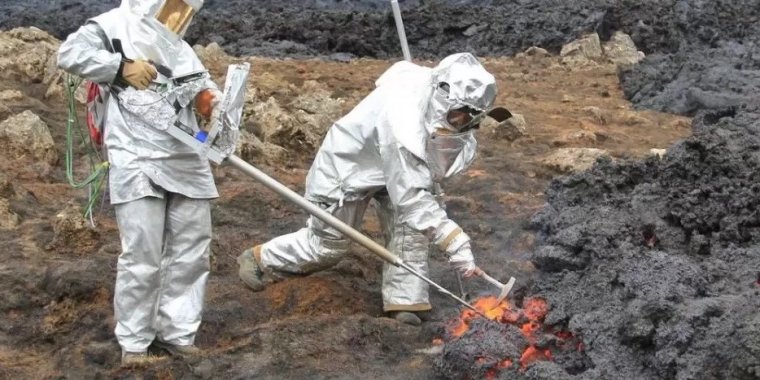| News / Science News |
An Iceland volcano modifies its magma
A team of NSF-funded researchers has discovered that an Iceland volcano changed how it formed magma as it continued to erupt from 2021 to 2022.

Oryaëlle Chevrel and Travis Parsons are conducting onsite investigations of the Litli-hrútur and Fagradalsfjall volcano eruptions in Iceland. They are employing a field rheometer prototype to measure the flow properties of lava at Litli-hrútur. Photo: Karim Kelfoun
The ongoing Fagradalsfjall eruptions near Reykjavík, Iceland, provided an ideal outdoor laboratory to investigate what causes long-term basaltic eruptions and how they can impact the local environment.
Before 2021, the volcano had been inactive for around 800 years.
The 2021 eruption prompted a team of researchers led by James Day, a geologist at the Scripps Institution of Oceanography at the University of California San Diego, to investigate how magma forms as melted rock deep within the Earth and subsequently rushes to the surface as lava.
After spilling onto the surface, the lava eventually cools across the landscape and becomes a new rock. Since magma forms at such great depths and extreme conditions, it's usually difficult to figure out how it formed.
Day and his team studied osmium isotopes in the cooled rocks to show that the 2021 lava included components from Earth's crust.
This lava showed fractional crystallization, meaning that some minerals formed crystals as the magma cooled, changing the resulting rock's composition.
The 2022 lava, on the other hand, did not include crustal components, indicating that as the series of eruptions went on, the magma changed how it formed.
These results will help to understand how magmas form and how volcanoes erupt. (U.S. National Science Foundation)
YOU MAY ALSO LIKE





